Finding and Understanding Intellectual Property
In today’s innovation-driven world, patent searching has become an essential skill for inventors, researchers, businesses, and legal professionals. Whether you’re developing a new product, conducting market research, or performing due diligence, understanding how to effectively search and analyze patents can save time, money, and resources while providing valuable competitive insights. This comprehensive guide will walk you through everything you need to know about conducting effective patent searches.
Understanding Patent Searches
Patent searching is the systematic process of finding and analyzing patent documents to gather information about existing technologies, innovations, and intellectual property rights. These searches serve multiple purposes, from validating the novelty of an invention to avoiding potential infringement issues. Before diving into the specifics of how to conduct patent searches, it’s crucial to understand their fundamental importance in the innovation ecosystem.
At its core, a patent search is about uncovering relevant prior art – any evidence that an invention is already known. Prior art searches, which are the foundation of patent searches, broadly cover previously patented inventions, published patent applications, and non-patent literature like scientific and trade publications, product manuals, and conference proceedings. The goal is to locate any publicly available information that may affect the patentability or validity of a patent.
Patents are territorial rights, meaning they are only enforceable within the jurisdiction that granted them. This makes it critical to search both domestic and international patent databases when evaluating freedom to operate or conducting due diligence. With over 100 patent offices worldwide and millions of patent documents, comprehensive searching requires an understanding of patent classification systems and familiarity with multiple databases.
The Importance of Patent Searching
Patent searching serves several critical functions in the innovation and business landscape:
Risk Mitigation
- Helps avoid costly patent infringement disputes
- Identifies potential licensing requirements
- Reduces redundant research and development efforts
- Prevents wasted resources on non-novel innovations
Effective patent searching is a proactive strategy to mitigate intellectual property risks. By identifying relevant patents early in the product development lifecycle, companies can design around potential infringement issues, seek necessary licenses, or pivot to alternative technologies. This due diligence can prevent expensive legal disputes down the road.
Even for companies not actively developing new products, patent searches are essential for assessing the intellectual property landscape before entering new markets. Clearance searches help ensure that a company has the freedom to operate without infringing on existing patent rights. In some cases, identifying relevant patents can also open up opportunities for cross-licensing or collaboration.
Business Intelligence
- Reveals competitor activities and strategies
- Identifies market trends and technological developments
- Helps in valuing intellectual property assets
- Guides strategic decision-making processes
Beyond risk mitigation, patent information is a rich source of business intelligence. Companies can gain valuable insights into competitors’ R&D focus, product pipelines, and overall strategies by analyzing their patent portfolios. This competitive intelligence can inform decisions on resource allocation, help identify potential acquisition targets, and provide a benchmark for a company’s own innovation efforts.
Patent landscapes, which provide a visual overview of patent filing trends in a particular technology area, are another valuable tool for business strategy. By understanding the concentration of patent filings, identifying key players, and tracking filing trends over time, companies can spot emerging technologies, assess market saturation, and identify innovation whitespace.
Legal Compliance
- Ensures freedom to operate in target markets
- Supports patent application processes
- Assists in patent opposition proceedings
- Facilitates due diligence in business transactions
For companies actively seeking patent protection, thorough prior art searching is crucial to the patent application process. Patent offices worldwide require applicants to disclose known prior art and make a good faith effort to search for relevant references. Failure to do so can result in reduced patent scope, invalidation of an issued patent, or even allegations of fraud.
In many jurisdictions, interested parties can also challenge the validity of a patent through opposition or post-grant review proceedings. Successful challenges often hinge on locating prior art that was not considered during the initial examination. As such, both patent owners and challengers rely on comprehensive searches to assess the strength of a patent.
Finally, patent searches are a standard component of due diligence in corporate transactions involving intellectual property. Whether licensing, buying, or selling patent assets, a thorough understanding of the patent landscape is necessary to properly value the assets and assess potential risks.
Types of Patent Searches
Different situations call for different types of patent searches, each serving a specific purpose in the intellectual property landscape:
Novelty Searches
A novelty search, also known as a patentability search, helps determine if an invention is new and non-obvious compared to existing technology. This type of search is crucial before filing a patent application, as it can reveal whether similar innovations already exist. Inventors and companies typically conduct novelty searches early in the development process to avoid investing resources in previously patented technologies.
Key aspects of novelty searches include:
- Comprehensive review of prior art
- Analysis of technical similarities and differences
- Assessment of inventive step
- Evaluation of commercial viability
The primary sources for a novelty search are published patents and patent applications. However, it’s also important to consider non-patent literature, as any public disclosure can potentially be used as prior art. This includes scientific publications, conference proceedings, product manuals, and even online content.
When conducting a novelty search, it’s essential to consider the broadest reasonable interpretation of the invention. This means searching for prior art that may not be identical but shares key technical features or solves the same problem. Searching international patent databases is also critical, as prior art from anywhere in the world can be used to assess novelty.
Interpreting the results of a novelty search requires both technical and legal analysis. It’s not enough to simply locate similar prior art; one must carefully compare the technical features to determine if the invention is truly new and non-obvious. Consulting with a patent professional can help navigate these nuances and provide an objective assessment of patentability.
Freedom to Operate (FTO) Searches
FTO searches focus on identifying active patents that might be infringed by a new product or process. These searches are particularly important for businesses planning to launch new products or enter new markets. Unlike novelty searches, FTO searches primarily focus on active patents within specific jurisdictions where the product will be manufactured or sold.
Critical components of FTO searches:
- Identification of relevant patent families
- Analysis of patent claims
- Assessment of territorial coverage
- Evaluation of patent status and expiration dates
The first step in an FTO search is to clearly define the product or process in question. This includes breaking down the key components, materials, and manufacturing steps. Each of these elements becomes a focal point for the search, as any one of them could potentially infringe on an existing patent.
Next, relevant databases must be identified based on the target markets for the product. While some countries, like the United States, make their full text patent databases available for free, others may require subscriptions to commercial databases. It’s important to search both granted patents and pending patent applications, as applications may eventually issue with broader claims.
When analyzing FTO search results, the focus is on the claims of the identified patents. Patent claims define the legal boundaries of the invention, so it’s essential to carefully compare the elements of each claim to the product or process in question. If any claim appears to cover the product, further analysis is needed to determine if the patent is still active and enforceable in the relevant jurisdictions.
Ultimately, the goal of an FTO search is to identify potential roadblocks and provide a risk assessment. If relevant patents are identified, the company must then decide how to proceed. Options may include designing around the patent, licensing the technology, or challenging the patent’s validity. In some cases, the search may reveal that the risk is low, giving the company confidence to move forward with product launch.
State of the Art Searches
These searches provide a comprehensive overview of existing technology in a particular field. Researchers and developers use state of the art searches to understand current technological trends, identify potential collaboration opportunities, and guide R&D efforts. These searches often include both patent and non-patent literature.
Benefits of state of the art searches:
- Understanding technology landscapes
- Identifying innovation opportunities
- Assessing competition
- Guiding research directions
State of the art searches are particularly valuable in rapidly evolving fields where new innovations are constantly emerging. By mapping out the current technical landscape, companies can identify gaps in the existing technology and spot opportunities for differentiation.
Unlike novelty or FTO searches, state of the art searches are not limited to patents. Scientific publications, conference proceedings, dissertations, and technical reports are all valuable sources of information. Including non-patent literature ensures a comprehensive view of the field and may uncover cutting-edge research that has not yet been patented.
Effective state of the art searches require a balance of breadth and depth. The search should be broad enough to capture the full scope of the technology area but focused enough to yield relevant results. This often involves an iterative process of refining search terms and parameters based on the initial results.
Analyzing state of the art search results involves synthesizing information from multiple sources to identify key themes, trends, and innovation opportunities. Visualization tools like patent landscapes and citation maps can be particularly helpful for understanding relationships between different technologies and identifying influential patents or research.
Incorporating state of the art searching into the R&D process ensures that research efforts build on the current state of technology rather than duplicating existing work. It can also help identify potential collaborators or licensors, leading to more efficient innovation.
Validity Searches
When challenging an existing patent or defending against infringement claims, validity searches help identify prior art that might invalidate the patent in question. These searches are particularly thorough and often extend beyond patent databases to include academic publications, technical documents, and other public disclosures.
Key elements of validity searches:
- Comprehensive prior art search
- Analysis of publication dates
- Assessment of enablement
- Evaluation of obviousness
The goal of a validity search is to locate prior art that was not considered during the original patent examination process. This may include patents from other jurisdictions, older publications that pre-date the patent, or non-patent literature that discloses key aspects of the invention.
To be effective as an invalidating reference, the prior art must meet certain legal requirements. It must have been publicly available before the patent’s filing date and must provide an enabling disclosure of the invention. This means that the reference must describe the invention in sufficient detail that a person skilled in the field could make and use it without undue experimentation.
Obviousness is another key factor in assessing validity. Even if no single prior art reference discloses all elements of the patented invention, the patent may still be invalid if the combination of multiple references would have been obvious to a skilled practitioner. Evaluating obviousness requires considering factors like the similarity of the references, the level of skill in the field, and any objective evidence of non-obviousness like commercial success or long-felt need.
Conducting a thorough validity search often requires searching multiple databases and using advanced search techniques to uncover hard-to-find references. It may also involve searching foreign language patents and non-patent literature, which can be time-consuming and expensive.
Given the legal complexities involved, validity searches are often conducted by specialized search firms or law firms with dedicated search professionals. These experts have the technical knowledge and legal understanding to locate the most relevant prior art and assess its potential impact on patent validity.
Essential Patent Search Tools and Databases
The success of a patent search largely depends on using the right tools and databases. Here’s a detailed examination of the primary resources available for patent searching:
Free Patent Databases
USPTO Patent Database
The United States Patent and Trademark Office (USPTO) maintains a comprehensive database of US patents and patent applications. The database offers basic and advanced search capabilities, allowing users to search by keywords, patent numbers, inventors, and other criteria.
Key features:
- Full-text search capabilities
- Patent application status tracking
- Assignment records
- Official patent file histories
Limitations:
- Complex user interface
- Limited international coverage
- Basic search functionality
- No analytics tools
The USPTO database is the authoritative source for US patent information. It includes full text of granted patents and published patent applications, as well as assignment records and file histories. For US-focused searches, it’s an essential resource.
However, the USPTO database has some limitations. The user interface can be complex and difficult to navigate, particularly for novice searchers. The database also has limited international coverage, so it must be supplemented with other resources for global searches. Additionally, the basic search functionality may not be sufficient for complex searches, and the database does not include built-in analytics tools.
Google Patents
Google Patents provides a user-friendly interface for searching patents worldwide. The platform incorporates machine learning to improve search results and offers translation capabilities for patents in different languages.
Advantages:
- Intuitive interface
- Machine translation capabilities
- Advanced search algorithms
- Integration with Google Scholar
Limitations:
- Limited advanced search features
- No professional analytics tools
- Occasional data inconsistencies
- Limited export capabilities
Google Patents is a popular choice for quick, basic searches. The platform’s intuitive interface and integration with other Google tools make it accessible to a wide range of users. The machine translation feature is also valuable for searching international patents.
However, Google Patents has some drawbacks for professional users. The advanced search features are limited compared to subscription databases, and the platform lacks the sophisticated analytics tools that many experts rely on. There have also been some reported issues with data consistency and completeness. Finally, the ability to export search results is limited, which can be a hindrance for large-scale analysis.
Espacenet
Operated by the European Patent Office (EPO), Espacenet provides access to more than 130 million patent documents worldwide. The database includes patents from over 100 countries and offers sophisticated search tools.
Features:
- Global patent coverage
- Classification search capabilities
- Patent family linking
- Machine translation services
Limitations:
- Technical user interface
- Limited non-patent literature coverage
- Bulk export limitations
- Server downtime and lag
Espacenet is one of the most comprehensive free patent databases, with coverage from a wide range of international patent offices. The database’s support for classification searching and patent family grouping make it a powerful tool for prior art searches.
However, Espacenet’s user interface can be technical and challenging for novice users. The database also focuses primarily on patent literature, with limited coverage of non-patent sources. Bulk exporting of search results is restricted, which can limit analysis options. Additionally, users sometimes report issues with server downtime and slow response times, particularly during peak usage hours.
These free databases provide a solid foundation for patent searching, particularly for individuals and small businesses with limited budgets. However, for more advanced searches and analytics, many professionals turn to commercial databases with expanded coverage and tools.
Commercial Patent Databases
Derwent Innovation
This professional platform offers enhanced search capabilities, analytics tools, and proprietary indexing. It’s particularly valuable for comprehensive patent analysis and portfolio management.
Key capabilities:
- Smart search algorithms
- Advanced analytics
- Custom reporting tools
- Portfolio management features
Derwent Innovation is a leading choice for intellectual property professionals. The platform’s proprietary Derwent World Patents Index (DWPI) provides enhanced patent abstracts and indexing, making it easier to find relevant results. The smart search algorithms also help users quickly narrow down results to the most pertinent patents.
For analysis and reporting, Derwent Innovation offers a range of advanced tools. Users can generate custom landscapes, citation networks, and filing trends reports. The platform also includes features for managing and analyzing patent portfolios, making it a comprehensive solution for IP management.
The main drawback of Derwent Innovation is the cost. As a premium platform, it may be out of reach for smaller organizations or individual inventors. Training and setup time may also be required to fully leverage the platform’s capabilities.
PatBase
PatBase provides access to global patent data with advanced search features, visualization tools, and collaboration capabilities. The platform is popular among intellectual property professionals and larger organizations.
Notable features:
- Comprehensive patent families
- Chemical structure searching
- Citation analysis
- Customizable dashboards
PatBase is known for its coverage of international patent families, making it a strong choice for global prior art searches. The platform also supports chemical structure searching, a valuable feature for the chemical and pharmaceutical industries.
For analysis, PatBase offers citation tools to identify influential patents and visualize citation networks. The customizable dashboards allow users to track key metrics and share insights across an organization.
Like other commercial platforms, PatBase comes with a significant price tag. The platform also has a steeper learning curve than some other databases, so dedicated training may be necessary to get the most value from the investment.
These commercial databases offer powerful capabilities for organizations with significant intellectual property needs. However, the cost and complexity can be barriers for some users. Many organizations find that a combination of free and commercial databases, chosen based on their specific needs and budget, provides the most effective solution.
Effective Patent Search Strategies
Keyword Development and Management
Developing effective keywords is crucial for comprehensive patent searching. Here’s a detailed approach to keyword development:
Technical Terminology
- Identify core technical terms
- Include industry-specific jargon
- Consider regional variations
- Include abbreviations and acronyms
Effective keyword development starts with a deep understanding of the technology involved. This means identifying the core technical terms that describe the invention’s components, processes, and applications. Industry-specific jargon should also be included, as different fields may use different terms for similar concepts.
It’s important to consider regional variations in terminology, particularly when searching international databases. What one country calls a “spanner”, another may call a “wrench”. Including these variations ensures that relevant results aren’t missed due to language differences.
Abbreviations and acronyms should also be included in the keyword list. Many technical terms have commonly used abbreviations that may be used in place of the full term in patent documents. For example, a search for “light emitting diode” should also include the acronym “LED”.
Synonyms and Alternatives
- List common alternatives
- Include technical and casual terms
- Consider different spelling variations
- Include related concepts
In addition to the core technical terms, it’s important to consider synonyms and alternative phrasings. This includes both technical and casual terminology. For example, a search for “autonomous vehicles” might also include terms like “self-driving cars”, “driverless cars”, and “robotic vehicles”.
Spelling variations should also be considered, particularly when searching international databases. British and American English often use different spellings for the same words, such as “colour” versus “color”. Including these variations ensures that relevant results are not overlooked.
Related concepts should also be included in the keyword list. These are terms that may not be direct synonyms but are closely related to the core technology. For example, a search for “solar panels” might also include terms like “photovoltaic cells”, “solar energy”, and “renewable power”. Including these related terms helps to capture a broader range of potentially relevant results.
Functional Descriptions
- Describe operational principles
- Include performance parameters
- Consider use cases
- Include application scenarios
Another approach to keyword development is to focus on functional descriptions of the invention. This means describing what the invention does, how it works, and what problems it solves.
Operational principles are a key part of functional descriptions. These are the fundamental mechanisms or processes that enable the invention to function. For example, a search for a new type of battery might include terms describing the chemical reactions, materials, and structural elements that make it work.
Performance parameters are another important aspect of functional descriptions. These are the measurable characteristics that define the invention’s capabilities and limitations. In the battery example, relevant performance parameters might include power density, charge/discharge rates, and cycle life.
Use cases and application scenarios should also be considered. These describe the specific ways in which the invention might be used or implemented. For the battery, this could include terms related to electric vehicles, grid storage, or portable electronics.
By combining technical terms, synonyms, and functional descriptions, searchers can develop a comprehensive set of keywords to drive their patent search. It’s often helpful to organize these keywords into logical groups or themes to make the search process more efficient.
Classification-Based Searching
Patent classifications provide a structured approach to searching related technologies. Understanding and utilizing these systems is crucial for comprehensive searching.
International Patent Classification (IPC)
The IPC system provides a hierarchical classification of patents based on different technology areas.
Structure:
- Section (8 main sections)
- Class
- Subclass
- Group
- Subgroup
Benefits:
- Standardized categorization
- Language-independent searching
- Hierarchical organization
- Global acceptance
The IPC is a worldwide classification system managed by the World Intellectual Property Organization (WIPO). It divides all technological fields into eight main sections, which are further subdivided into classes, subclasses, groups, and subgroups.
One of the main benefits of the IPC is that it provides a standardized, language-independent way to categorize and search patents. Because the IPC codes are assigned based on the technical content of the patent, rather than the specific terminology used, it allows searchers to find relevant patents regardless of the language or phrasing used in the document.
The hierarchical structure of the IPC also allows searchers to easily broaden or narrow their search scope as needed. By starting at a high level, such as the section or class, and then drilling down into more specific subclasses and groups, searchers can efficiently navigate the vast landscape of patent documents.
Finally, because the IPC is accepted worldwide, it provides a common framework for international patent searching. This is particularly valuable for global prior art searches and freedom to operate analyses.
Cooperative Patent Classification (CPC)
The CPC system builds upon the IPC system with additional detail and modern technology categories.
Advantages:
- More detailed classification
- Regular updates
- Better coverage of emerging technologies
- Improved search precision
The CPC is a joint classification system developed by the European Patent Office (EPO) and the United States Patent and Trademark Office (USPTO). It builds upon the IPC system, using the same general structure but providing a more granular classification of modern technologies.
One of the key advantages of the CPC is the level of detail it provides. By offering more specific subclasses and groups, particularly in rapidly evolving technology areas, the CPC enables more precise searching. This can help searchers quickly narrow down results to the most relevant patents.
The CPC is also updated more frequently than the IPC, with new categories added to keep pace with emerging technologies. This makes it particularly valuable for searching in cutting-edge fields like artificial intelligence, biotechnology, and nanotechnology.
Like the IPC, the CPC provides a language-independent way to search patents. However, because of its increased specificity, it can enable more targeted searches and reduce the number of irrelevant results.
Effective use of patent classification systems involves a balance of broad and narrow searches. Searchers often start by identifying relevant classes and subclasses, and then use keyword searching within those categories to further refine results. Many patent databases allow users to combine classification and keyword searches for the most comprehensive results.
It’s worth noting that while the IPC and CPC are the most widely used classification systems, some countries and regions also maintain their own classifications. When conducting international searches, it’s important to be aware of these local systems and how they map to the IPC or CPC.
Search Documentation and Organization
Maintaining comprehensive records of your patent search process is crucial for:
Documentation Requirements:
- Search strategies used
- Databases consulted
- Date ranges covered
- Results obtained
- Analysis performed
- Decisions made
Organization Methods:
- Digital filing systems
- Search logs
- Result matrices
- Analysis frameworks
- Report templates
Good documentation is essential for demonstrating the thoroughness of a patent search, particularly in legal contexts. It allows others to retrace the steps of the search, understand the rationale behind decisions, and assess the completeness of the results.
Key elements to document include the specific search strategies used, such as the keywords, classifications, and Boolean operators. It’s also important to record which databases were searched, as different databases may have different coverage and search capabilities.
Date ranges are another crucial piece of information, as the relevant timeframe for a search can vary depending on the purpose. For example, a novelty search may only be concerned with prior art before the filing date of the patent in question, while a freedom to operate search needs to consider all active patents regardless of filing date.
The raw search results should be saved and organized in a way that allows for easy review and analysis. This might involve creating a matrix or spreadsheet to compare key features of the results, or using a dedicated patent analysis software.
As the results are analyzed, it’s important to document the insights gleaned and the decisions made. This might include noting which results are most relevant, identifying key patterns or trends, and making determinations about patentability or freedom to operate.
Having templates and frameworks for documenting searches can help ensure consistency and completeness. Many organizations develop standard operating procedures (SOPs) for patent searching that outline the required documentation elements and provide templates for search logs, result matrices, and final reports.
Effective documentation is not only important for legal defensibility, but also for knowledge management within an organization. By creating a searchable repository of past searches, organizations can leverage prior work, avoid duplication of effort, and build institutional knowledge over time.
In the next section, we’ll dive into some advanced search techniques that can help make your patent searches even more effective.
Advanced Search Techniques
Boolean Operators and Proximity Searches
Understanding and effectively using search operators can significantly improve search results.
Boolean Operators
- AND: Requires all terms
- OR: Allows any terms
- NOT: Excludes terms
- XOR: Exclusive or
- Parentheses: Grouping terms
Boolean operators are the building blocks of complex search queries. They allow you to combine multiple keywords or phrases to create more targeted searches.
The AND operator requires that all specified terms be present in the search results. This is useful for narrowing down results to only the most relevant hits. For example, searching for “wireless AND communication” will return only results that contain both the term “wireless” and the term “communication”.
The OR operator, on the other hand, will return results that contain any of the specified terms. This is helpful for broadening a search to include multiple synonyms or related concepts. Searching for “car OR automobile OR vehicle” will return results that contain any one of those terms.
The NOT operator excludes results that contain a certain term. This can be used to eliminate irrelevant hits. A search for “battery NOT lead-acid” will return results about batteries, but exclude any results that mention lead-acid batteries specifically.
The XOR, or exclusive or, operator returns results that contain either of the specified terms, but not both. While less commonly used, it can be helpful in certain situations to find mutually exclusive concepts.
Parentheses allow you to group terms and operators to create more complex queries. They define the order in which the operators are applied. For example, “(wireless OR mobile) AND communication” will return results that contain either “wireless” or “mobile”, but must also contain “communication”.
Proximity Operators
- NEAR/n: Terms within n words
- BEFORE: Term sequence
- AFTER: Term sequence
- SAME: Terms in same field
- WITH: Terms in same sentence
While Boolean operators focus on the presence or absence of terms, proximity operators deal with the location and sequence of terms within a document.
The NEAR operator requires that two terms appear within a certain number of words of each other. The “/n” specifies the maximum number of intervening words allowed. For example, “wireless NEAR/3 communication” will return results where “wireless” and “communication” appear within three words of each other, in either order.
The BEFORE and AFTER operators specify the required sequence of terms. “mobile BEFORE wireless” will return results where “mobile” appears before “wireless”, while “wireless AFTER mobile” will return the opposite.
The SAME operator requires that terms appear in the same specified field of a patent document. This is useful for focusing searches on specific sections like titles, abstracts, or claims. For example, “SAME(wireless, communication, abstract)” will return results where “wireless” and “communication” both appear in the abstract.
The WITH operator is similar to NEAR, but requires that the terms appear within the same sentence. This can be useful for finding more closely related concepts.
Effectively using Boolean and proximity operators can greatly improve the precision and recall of patent searches. However, it’s important to note that the exact syntax for these operators can vary between different databases. Always consult the specific database’s documentation for the proper usage.
In the next section, we’ll explore how patent families and international filings can impact your search strategy.
Patent Family Analysis
Understanding patent families helps track related patents across different jurisdictions.
Simple Patent Families
- Direct priority relationships
- Same invention
- Common priority date
- Identical technical content
Extended Patent Families
- Related applications
- Continuations
- Divisionals
- Continuation-in-part applications
Complex Patent Families
- Multiple priorities
- Partial priorities
- Cross-referenced applications
- Related technical content
Patent families are groups of patent applications or granted patents that are related to each other through common priority claims. Understanding these relationships is crucial for comprehensive prior art searches and freedom to operate analyses.
Simple patent families are the most straightforward. They include all patent documents that are directly linked by priority claims and cover the same invention. These documents will have the same priority date and identical technical content, but may have different claims or legal status in different countries.
Extended patent families include related applications that may not have a direct priority link, but still cover the same general invention. This includes continuations, divisionals, and continuation-in-part applications.
Continuations are patent applications that are filed to add new claims to an existing application. They have the same specification and priority date as the original application, but can have different claim scope.
Divisional applications are used when a patent office determines that an application covers multiple distinct inventions. The original application is then divided into separate applications, each covering a single invention. Divisionals have the same priority date and specification as the original, but different claims.
Continuation-in-part (CIP) applications are a special case where new matter is added to an existing application. The CIP has the same priority date as the original for any shared content, but a later priority date for the new matter. This can create complex priority situations.
Complex patent families can involve multiple priority claims, partial priorities, and cross-referenced applications. These situations arise when patent applications claim priority from multiple earlier filings, often in different countries. The resulting patent family can have a web of interrelated priorities and technical content.
Analyzing patent families is essential for understanding the full scope of protection for an invention. A patent may have a limited claim scope in one country, but broader coverage in another through a related family member. Failing to consider the full family could lead to an incomplete assessment of prior art or freedom to operate.
Patent databases often have tools for visualizing and analyzing patent families. These can include family trees showing the priority relationships, timelines of key events, and maps of geographic coverage. Effectively using these tools can provide a clearer picture of the global patent landscape.
In the next section, we’ll discuss some strategies for interpreting and making sense of your search results.
Understanding Search Results
Analysis and Interpretation
Effective analysis of patent search results requires:
Technical Analysis
- Claim interpretation
- Technical comparison
- Feature mapping
- Innovation assessment
Legal Analysis
- Validity assessment
- Infringement analysis
- Territory coverage
- Term calculation
Commercial Analysis
- Market relevance
- Competition assessment
- Licensing opportunities
- Portfolio strategy
Interpreting patent search results is a multifaceted process that involves technical, legal, and commercial considerations.
From a technical perspective, the first step is to carefully read and interpret the claims of the relevant patents. Patent claims define the legal boundaries of the invention, so understanding their scope is crucial. This involves analyzing the specific language used, the relationship between different claim elements, and any explicit or implicit definitions provided in the specification.
Next, the technical features of the invention need to be compared to the search query or product of interest. This involves mapping the key features of the query to the corresponding elements in the patent claims. Any similarities or differences should be noted, as they will impact the legal and commercial assessments.
The overall level of innovation represented by the patent should also be assessed. This involves considering factors like the problem solved, the advantages over prior solutions, and any unexpected results or synergies. A highly innovative patent may be more valuable and more likely to withstand validity challenges.
From a legal perspective, the validity and enforceability of the patent need to be evaluated. This includes considering the strength of the prior art, any potential obviousness or enablement issues, and the status of any post-grant proceedings. The territorial coverage of the patent family should also be assessed to determine where the patent rights are in force.
For patents that may pose a freedom to operate issue, a detailed infringement analysis is necessary. This involves comparing the specific elements of the patent claims to the potentially infringing product or process. Any differences or workarounds should be identified and evaluated for their legal and practical feasibility.
The term of the patent is another important legal consideration. Patents generally expire 20 years from their filing date, but this can be extended in some cases due to patent office delays or regulatory review periods. Understanding the remaining term of a patent is crucial for assessing its ongoing impact and value.
From a commercial perspective, the market relevance and potential value of the patent need to be considered. This includes analyzing the size and growth of the relevant market, the competitive landscape, and the specific advantages the patented technology offers. Patents covering key features in a large and growing market will generally be more valuable than those in a small or declining market.
The patent owner and their competitive position should also be assessed. A patent held by a major market player may pose a more significant threat than one held by a smaller entity. On the other hand, patents held by non-practicing entities or academic institutions may present licensing opportunities.
Finally, the overall patent portfolio and strategy of the patent owner should be considered. A single patent may be part of a larger web of intellectual property that could impact its value and enforceability. Understanding the broader context can inform decisions about licensing, litigation, and product design.
Developing a structured approach to analyzing patent search results is essential for making informed decisions. Many organizations use standardized templates or rubrics to ensure consistency and completeness in their assessments. Collaboration between technical, legal, and business stakeholders is also key to developing a comprehensive understanding of the implications of the search results.
In the next section, we’ll explore some best practices for documenting and communicating your search findings.
Documentation Best Practices
Proper documentation of patent search results includes:
Search Records
- Search strategies
- Database selection
- Date ranges
- Search terms
- Classification codes
Result Analysis
- Relevance assessment
- Technical evaluation
- Legal status
- Commercial importance
Reporting
- Executive summary
- Detailed findings
- Recommendations
- Supporting evidence
Thorough and clear documentation is essential for communicating the results of a patent search and supporting decision-making. It also serves as a record of due diligence and can be important evidence in legal proceedings.
The first step in documenting a patent search is to record the search process itself. This includes the specific search strategies used, such as the keywords, classification codes, and Boolean operators. The rationale for the chosen strategies should also be explained.
The databases searched should be clearly listed, along with any date ranges or other filters applied. This information is important for assessing the comprehensiveness of the search and the potential for missed results.
As the search results are reviewed, the relevance of each result should be assessed and documented. This might involve a simple rating scale (e.g., high, medium, low relevance) or a more detailed analysis of how the result relates to the search query.
For the most relevant results, a deeper technical evaluation is necessary. This should include a summary of the key technical features, an analysis of the similarities and differences to the search query, and an assessment of the overall level of innovation.
The legal status of the relevant patents should also be documented. This includes the current status (e.g., pending, granted, expired), any post-grant proceedings, and the remaining term. For granted patents, the specific claims that are relevant should be noted.
The commercial importance of the patents should also be assessed and documented. This might include an estimate of the market value, an analysis of the competitive landscape, and an assessment of potential licensing opportunities or threats.
Once the individual results have been analyzed, the overall findings of the search need to be synthesized and communicated. This typically involves preparing a report that includes an executive summary, detailed findings, recommendations, and supporting evidence.
The executive summary should provide a high-level overview of the search process, the key findings, and the main recommendations. It should be concise and easily understandable by non-technical stakeholders.
The detailed findings section should provide a more in-depth analysis of the search results. This might include:
- A summary of the overall technology landscape, including key players, trends, and innovation areas
- Detailed profiles of the most relevant patents, including their technical content, legal status, and commercial significance
- A comparison of the relevant patents to the product or process in question, highlighting any potential infringement risks or design-around opportunities
- An assessment of the overall strength and value of the relevant patents
The recommendations section should provide clear, actionable advice based on the search findings. This might include:
- Suggestions for product design changes to avoid infringement
- Recommendations for licensing or acquisition of key patents
- Strategies for challenging or invalidating problematic patents
- Proposals for further research or monitoring in certain areas
Finally, the supporting evidence section should include all the raw data and analysis that supports the findings and recommendations. This might include the full search records, annotated result lists, claim charts, and any other relevant documents.
Effective documentation is clear, well-organized, and tailored to the needs of the intended audience. Technical details should be explained in a way that is accessible to non-experts, and the implications of the findings should be spelled out clearly.
Visual aids like charts, graphs, and diagrams can be very helpful for communicating complex patent information. Many modern patent analytics tools offer visualization capabilities that can automatically generate landscapes, citation maps, and other helpful graphics.
Consistency and standardization in documentation are also important, particularly for organizations that conduct frequent patent searches. Developing templates, style guides, and standard operating procedures can help ensure that all searches are documented to a high standard and that the information is easily comparable across different projects.
Well-documented patent searches not only inform immediate decisions, but also contribute to an organization’s long-term knowledge management. By capturing the insights from each search in a clear and accessible format, organizations can build a valuable repository of competitive intelligence that can inform strategic decisions for years to come.
In the final sections, we’ll look at some industry-specific considerations for patent searching and discuss emerging trends that are shaping the future of this critical field.
Industry-Specific Considerations
While the general principles of patent searching apply across all industries, there are some unique considerations for specific technology domains.
Technology and Software Patents
Special considerations for technology-related patent searches:
Software Patents
- Abstract concepts
- Implementation variations
- Platform dependencies
- Technical effects
Hardware Patents
- Component integration
- Manufacturing processes
- Performance specifications
- Interface standards
Searching for software and technology patents presents some unique challenges. Software patents, in particular, can be difficult to search due to the abstract nature of the inventions and the wide variety of ways they can be described.
One key issue with software patents is that they often cover abstract concepts or business methods implemented using generic computing hardware. This can make it difficult to identify the core innovation and distinguish it from prior art.
Software patents also often have many possible implementation variations. A single invention might be described in terms of different programming languages, system architectures, or user interfaces. Searchers need to think broadly about the possible ways a software invention could be realized.
Platform dependencies are another consideration. Software inventions may be tied to specific operating systems, hardware platforms, or application environments. Searchers need to consider these dependencies and how they might affect the scope of the patent.
Finally, software patents often focus on the technical effects or improvements provided by the invention, rather than the specific implementation details. Searchers need to look beyond the surface details to understand the underlying technical contribution.
For hardware patents, the focus is often on the specific components and how they are integrated into a complete system. Searchers need to consider not just the individual elements, but also their interconnections and interactions.
Manufacturing processes are often key for hardware inventions. The way a product is made can be just as important as its final structure. Searchers should include manufacturing-related keywords and classifications in their searches.
Performance specifications and operational parameters are also important for hardware searches. These are the measurable characteristics that define what a product does and how well it does it. Numeric ranges and units of measure should be considered in search queries.
Interface standards are another key area for hardware searches, particularly in the electronics and telecommunications fields. Inventions that enable interoperability between different systems can be very valuable. Searchers should be familiar with the key interface standards in their domain.
Medical and Pharmaceutical Patents
Key factors in medical patent searching:
Drug Patents
- Chemical compounds
- Formulations
- Methods of treatment
- Manufacturing processes
Medical Device Patents
- Technical specifications
- Safety requirements
- Regulatory compliance
- Usage methods
The medical and pharmaceutical industries are among the most patent-intensive, with unique legal and regulatory considerations.
For drug patents, the primary focus is often on the chemical composition of the active ingredient. Searchers need to be familiar with chemical naming conventions and should consider synonyms and structural variations in their queries.
Drug formulations and delivery methods are also important. A new formulation or route of administration can extend the patent life of an existing drug. Searchers should consider keywords related to drug dosage forms, excipients, and pharmacokinetics.
Methods of treatment are another key area for drug patents. These patents cover the use of a drug to treat a specific disease or condition. Searchers should include medical terminology and disease names in their queries.
Manufacturing processes are also critical for drug patents. The way a drug is synthesized, purified, and formulated can be the basis for patent protection. Process-related keywords and classifications should be part of a comprehensive search strategy.
For medical device patents, the focus is often on the technical specifications and performance of the device. Detailed device descriptions, component lists, and operational parameters are all important for searches.
Safety and efficacy are paramount for medical devices. Patents often focus on features that improve safety, reduce side effects, or enhance clinical outcomes. Searchers should consider keywords related to device safety testing, biocompatibility, and clinical trial results.
Regulatory compliance is another key consideration for medical device patents. Devices must meet stringent requirements set by bodies like the FDA or EMA. Searchers should be familiar with the relevant regulatory standards and include compliance-related keywords in their searches.
Usage methods are also important for medical device patents. The way a device is used by healthcare providers or patients can be a key point of innovation. Searchers should consider keywords related to device handling, user interfaces, and treatment protocols.
By understanding the unique technical and legal landscapes of their industries, patent searchers can develop more effective strategies and uncover the most relevant prior art.
Future Trends in Patent Searching
The field of patent searching is constantly evolving, driven by advances in technology and changes in the legal and business environment.
Artificial Intelligence Integration
AI is transforming patent searching through:
Search Enhancement
- Natural language processing
- Semantic analysis
- Image recognition
- Automated classification
Analysis Tools
- Predictive analytics
- Trend identification
- Relevance ranking
- Automated summarization
One of the most significant trends is the increasing use of artificial intelligence (AI) and machine learning in patent search and analysis.
AI technologies like natural language processing (NLP) and semantic analysis are enhancing the search process itself. These tools can understand the meaning behind search queries, regardless of the specific words used. This can help identify relevant patents that use different terminology or phrasing.
Image recognition AI is also being applied to patent searching. This technology can search and analyze the visual content of patents, such as drawings and diagrams. This can be particularly useful for fields like mechanical engineering and product design.
Automated classification is another AI application in patent searching. Machine learning models can be trained to automatically categorize patents based on their technical content. This can save significant time and effort compared to manual classification.
On the analysis side, AI is enabling new insights and efficiencies. Predictive analytics can forecast technology trends and identify promising areas for innovation. This can help organizations make more informed R&D investments and strategic decisions.
AI can also automatically identify key trends and patterns in large patent datasets. This might include spotting emerging technology areas, identifying key players, or uncovering potential infringement risks.
Relevance ranking and automated summarization are other AI applications that are streamlining patent analysis. These tools can quickly identify the most pertinent patents in a search result set and provide concise summaries of their key points. This can significantly speed up the review process.
Blockchain Applications
Emerging blockchain uses in patent searching:
Patent Management
- Digital rights management
- Smart contracts
- Automated licensing
- Transaction tracking
Data Security
- Immutable records
- Access control
- Audit trails
- Verification systems
Blockchain technology is also starting to make inroads in the patent world, with potential applications for both patent management and data security.
On the management side, blockchain can enable secure, transparent record-keeping for patent assets. Each patent could be represented as a unique digital asset, with ownership and transaction history recorded on the blockchain.
Smart contracts built on blockchain platforms could automate many aspects of patent licensing and royalty payments. Terms could be encoded directly into the contract, with payments automatically triggered when conditions are met. This could reduce administrative overheads and improve transparency.
Blockchain could also enable new models of patent monetization, such as fractional ownership or real-time micro-licensing. Patent rights could be divided and traded more flexibly, opening up new investment and revenue opportunities.
From a data security perspective, blockchain’s immutable, distributed ledger could enhance the integrity of patent records. Once data is recorded on the blockchain, it can’t be altered or deleted without leaving a trace. This could be valuable for proving the existence and ownership of patent assets.
Blockchain-based access control and permission systems could also help secure sensitive patent data. Fine-grained access rules could be enforced automatically, with all access attempts recorded on the blockchain for auditing.
The distributed nature of blockchain networks could also provide resilience against data loss or system failures. With multiple nodes holding copies of the data, there’s no single point of failure.
While the application of blockchain to patent management is still in its early stages, it holds significant promise. As the technology matures and more use cases emerge, it could drive major changes in how patents are managed and monetized.
Patent searching is a complex, multidisciplinary field that plays a crucial role in today’s innovation economy. By providing the tools to navigate the ever-growing landscape of patent information, patent searchers enable organizations to make informed decisions, reduce risk, and drive strategic advantage.
As we’ve seen in this guide, effective patent searching requires a blend of technical expertise, legal knowledge, and strategic thinking. It demands proficiency with a range of tools and databases, as well as the ability to analyze and interpret complex patent documents.
But patent searching is not a static field. As new technologies emerge and legal frameworks evolve, searchers must continually adapt and expand their skills. The integration of AI and blockchain technologies, in particular, is set to drive significant changes in the years ahead.
By staying abreast of these developments and continually honing their craft, patent searchers can continue to provide the critical insights and intelligence that fuel innovation. Whether advising on R&D strategy, assessing freedom to operate, or supporting patent litigation, their work will remain vital to success in the knowledge economy.
This guide has aimed to provide a comprehensive foundation for understanding and conducting effective patent searches. But it’s important to remember that mastery comes through practice and continuous learning.
Aspiring patent searchers should seek out opportunities to work on real-world projects, learning from experienced mentors and peers. They should stay engaged with the professional community, participating in conferences, workshops, and online forums to share knowledge and stay current with best practices.
Organizations, for their part, should recognize the strategic value of patent searching and invest in building strong in-house capabilities. This means providing the tools, training, and resources needed for searchers to excel in their roles.
In a world where knowledge is the key to competitive advantage, the ability to effectively navigate and utilize patent information is a powerful asset. By mastering the art and science of patent searching, individuals and organizations can unlock the full potential of intellectual property and drive the innovations that shape our future.

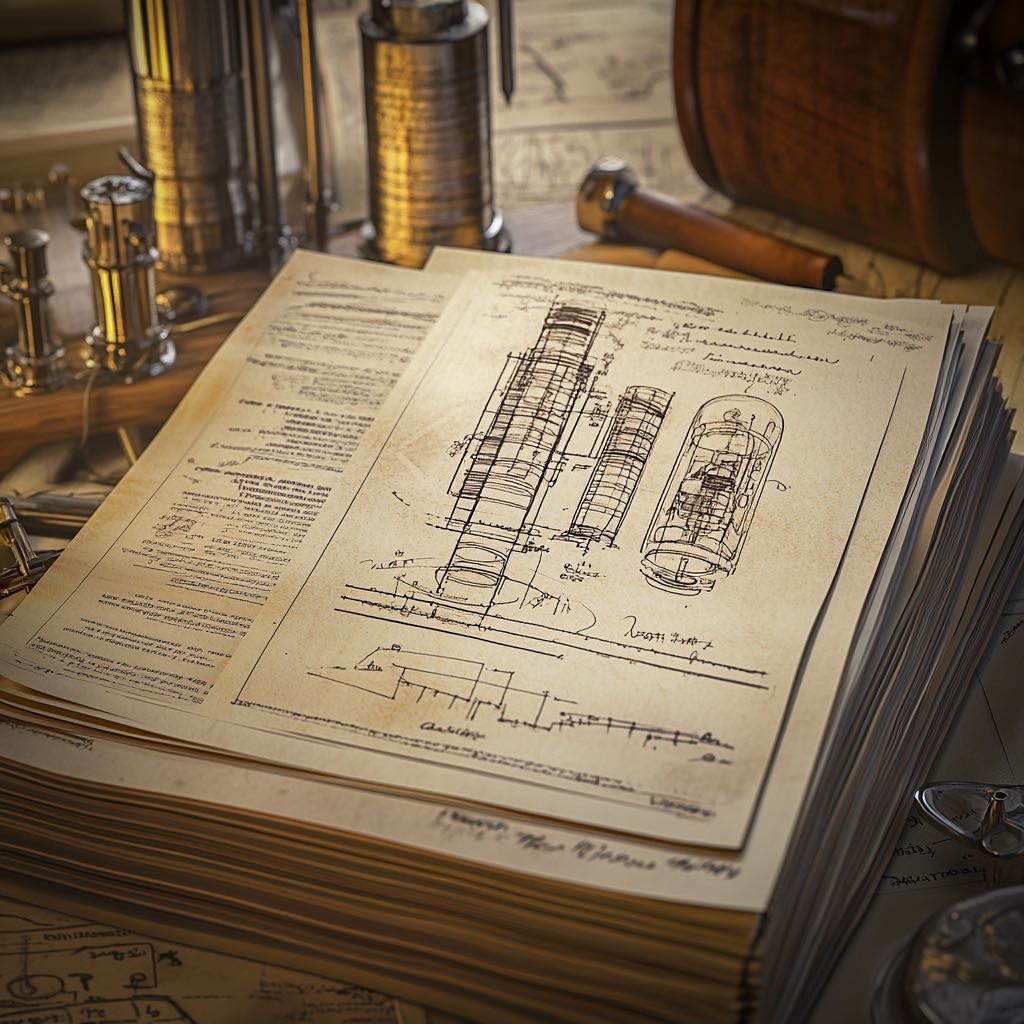

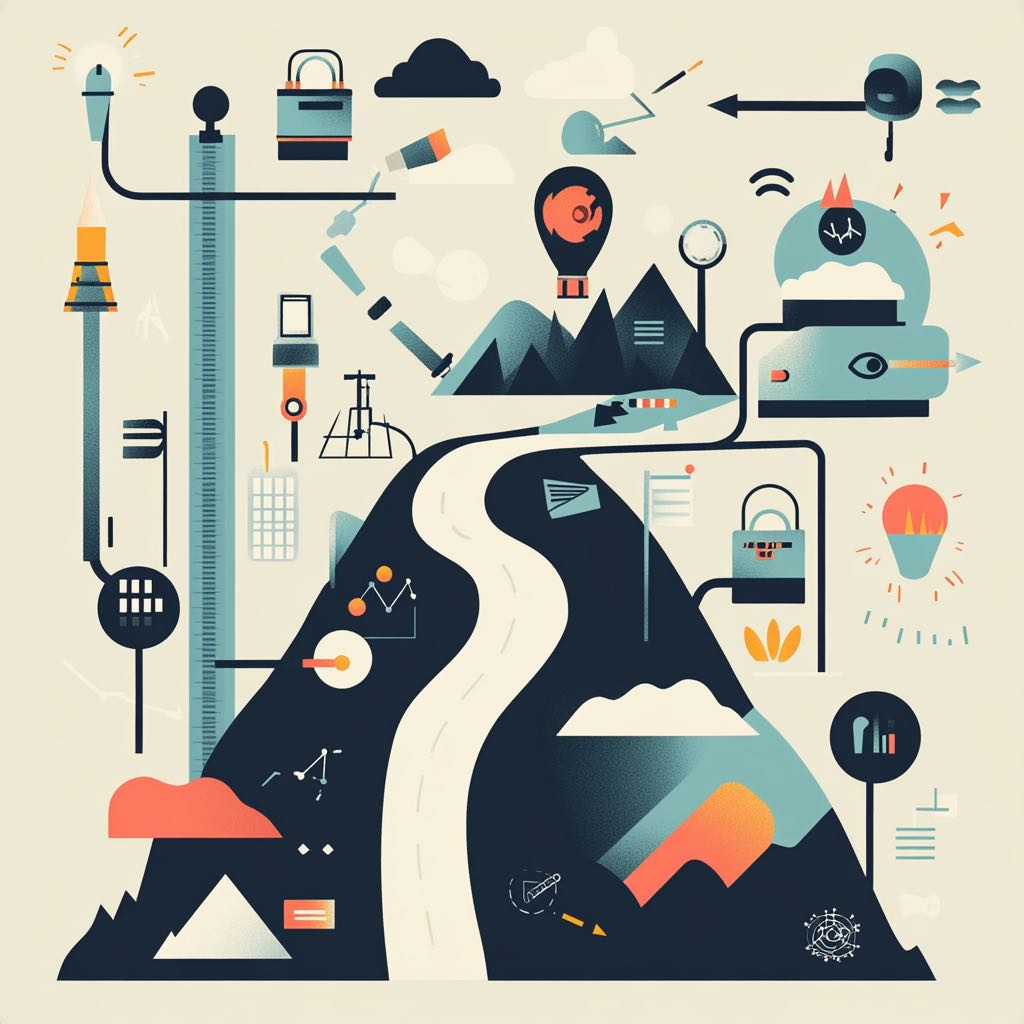









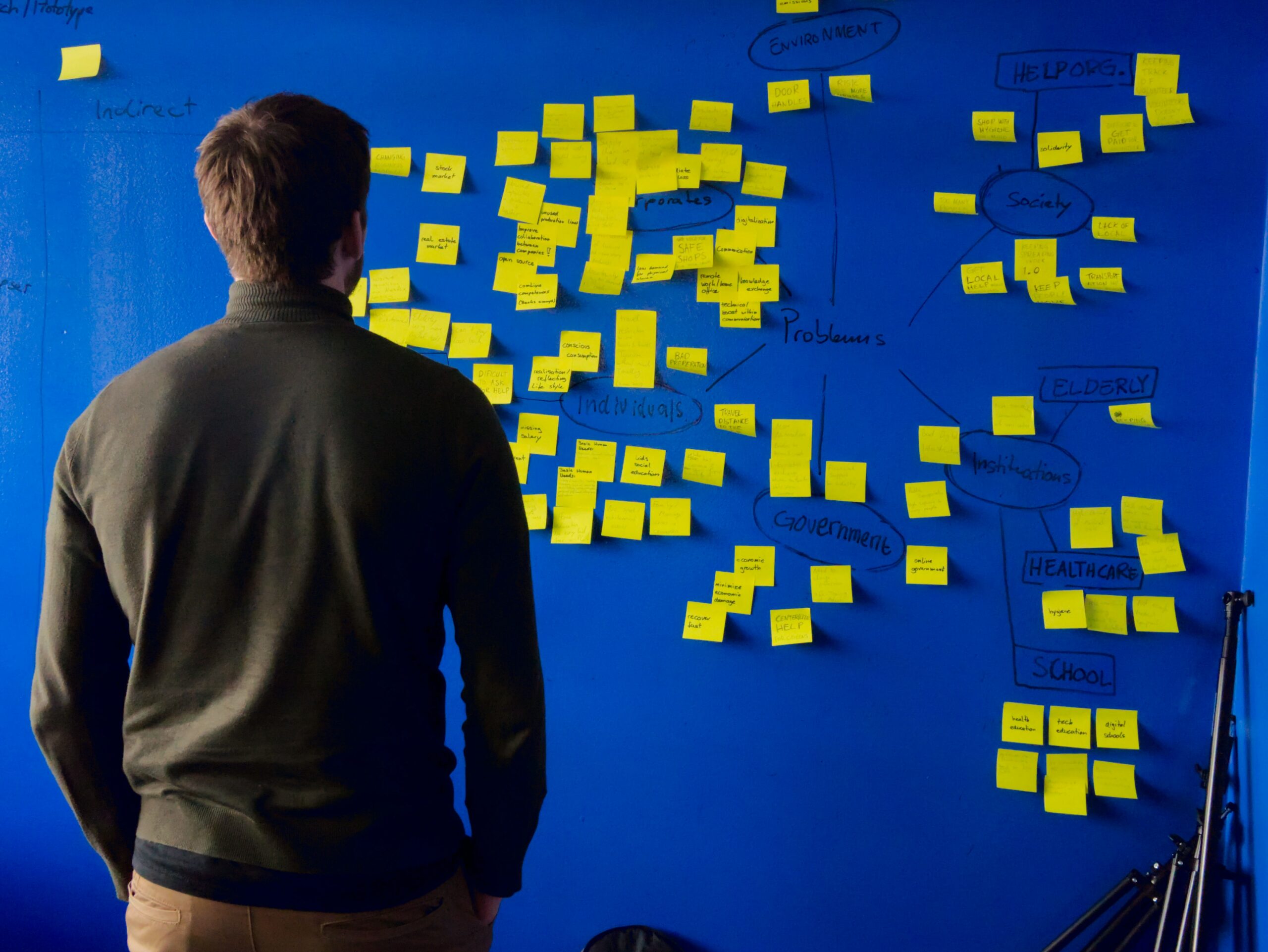
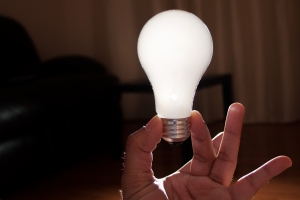


 You have just created a brand new gadget, it’s innovative, extremely useful and everybody is dying for one. But before you can turn your new invention into millions of dollars, you need to protect it from being stolen by other would be millionaires. To do this you need a patent. But wait, you don’t have the small fortune that it sometimes takes to patent a new invention.
You have just created a brand new gadget, it’s innovative, extremely useful and everybody is dying for one. But before you can turn your new invention into millions of dollars, you need to protect it from being stolen by other would be millionaires. To do this you need a patent. But wait, you don’t have the small fortune that it sometimes takes to patent a new invention.


 So you have created something fantastic but you don’t know if your invention is original enough to qualify for a patent. Before you spend hundreds (maybe thousands) of dollars submitting a patent application, you need a patent search performed to see if someone else has already patented your idea.
So you have created something fantastic but you don’t know if your invention is original enough to qualify for a patent. Before you spend hundreds (maybe thousands) of dollars submitting a patent application, you need a patent search performed to see if someone else has already patented your idea.
 Creating a new invention can take lots of time and money. So, for most inventors finding away to commercialize their invention is very important. Commercialization will allow you to recoup the money you spent developing the invention and to be rewarded financially for your innovation.
Creating a new invention can take lots of time and money. So, for most inventors finding away to commercialize their invention is very important. Commercialization will allow you to recoup the money you spent developing the invention and to be rewarded financially for your innovation.
 Is it possible to patent an idea? “Patenting an idea” is one of the most commonly used expressions when someone wants to be granted a patent for something new that they have developed. However, an idea itself cannot be patented.
Is it possible to patent an idea? “Patenting an idea” is one of the most commonly used expressions when someone wants to be granted a patent for something new that they have developed. However, an idea itself cannot be patented.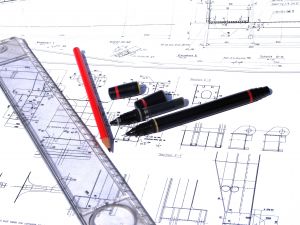
 Inventors have enjoyed the ability to file a Provisional Patent Application since June of 1995.
Inventors have enjoyed the ability to file a Provisional Patent Application since June of 1995.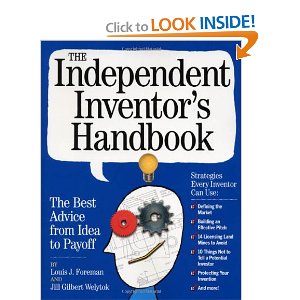

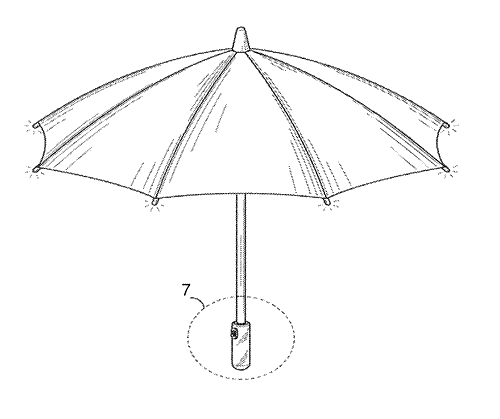
 In this article we cover the much asked question of how to patent a design. Design patents are granted for designs that are new, ornamental in nature and applied to an article of manufacture. They cover the aesthetic aspects of an article only, as opposed to utility patents, which cover an article’s function and utility.
In this article we cover the much asked question of how to patent a design. Design patents are granted for designs that are new, ornamental in nature and applied to an article of manufacture. They cover the aesthetic aspects of an article only, as opposed to utility patents, which cover an article’s function and utility.


 In this article we talk about how to copyright an idea. Have you a written a new ebook that you would like to distribute or a new song that you would like to publish? Do you have an idea for a movie script that you would like to shop around? Have you developed a new app for smart-phones that you would like to sell online?
In this article we talk about how to copyright an idea. Have you a written a new ebook that you would like to distribute or a new song that you would like to publish? Do you have an idea for a movie script that you would like to shop around? Have you developed a new app for smart-phones that you would like to sell online?
 In this article we provide a brief discussion of patent licensing as an attractive way for inventors to monetize their patents.
In this article we provide a brief discussion of patent licensing as an attractive way for inventors to monetize their patents.



 Surely one day they’re going to invent a way to heal cuts and wounds significantly faster. Some kind of material that you just rub onto a wound (or a super-plaster of sorts), and within minutes the wound is healed and there are no scars.
Surely one day they’re going to invent a way to heal cuts and wounds significantly faster. Some kind of material that you just rub onto a wound (or a super-plaster of sorts), and within minutes the wound is healed and there are no scars. Here’s one that we all can hopefully agree upon. We’re living in the twenty-first century, and yet there is still no cure for the common cold. A cold brings you down: it makes you snivel and sniff and all congested for days.
Here’s one that we all can hopefully agree upon. We’re living in the twenty-first century, and yet there is still no cure for the common cold. A cold brings you down: it makes you snivel and sniff and all congested for days. So you’re chewing your gum. Chewing and chewing. You’re really enjoying the flavor: it’s fresh, pungent, rich and sometimes even a bit spicy. And after a few minutes it’s gone, evaporated. You might as well be chewing on a piece of rubber; it tastes just the same. That’s why we say that someone should invent infinitely flavorsome chewing gum.
So you’re chewing your gum. Chewing and chewing. You’re really enjoying the flavor: it’s fresh, pungent, rich and sometimes even a bit spicy. And after a few minutes it’s gone, evaporated. You might as well be chewing on a piece of rubber; it tastes just the same. That’s why we say that someone should invent infinitely flavorsome chewing gum. One of the most painful things in the world is your mobile phone going dead. Especially when you’re out, with no access to a charger, and you need to receive a text or make a phone call. And smartphones are particularly bad at battery life. The problem is the very concept of the battery that requires an external electric power source to charge it.
One of the most painful things in the world is your mobile phone going dead. Especially when you’re out, with no access to a charger, and you need to receive a text or make a phone call. And smartphones are particularly bad at battery life. The problem is the very concept of the battery that requires an external electric power source to charge it. Not sure how well this one would fly; some people love bragging about how drunk they got the night before. But others would love to enjoy alcohol without feeling incredibly hung-over the next day.
Not sure how well this one would fly; some people love bragging about how drunk they got the night before. But others would love to enjoy alcohol without feeling incredibly hung-over the next day. Ok I’m not sure how possible this is. But that’s the whole point of being inventive and creative: it’s to go beyond the possible. So this idea is a means to prevent the need to have a cumbersome and heavy oxygen tank with you when you dive in the ocean. Besides that, there’s always the worry that it might run out.
Ok I’m not sure how possible this is. But that’s the whole point of being inventive and creative: it’s to go beyond the possible. So this idea is a means to prevent the need to have a cumbersome and heavy oxygen tank with you when you dive in the ocean. Besides that, there’s always the worry that it might run out.




 Got it (seriously you need to get it and do this right now). This is your canvas. Now write down 5 fields or areas that interest you. You can be quite general for the moment. Golf, football, cooking, anything that comes to mind.
Got it (seriously you need to get it and do this right now). This is your canvas. Now write down 5 fields or areas that interest you. You can be quite general for the moment. Golf, football, cooking, anything that comes to mind. I want you to look over that list, and seize upon one of the keywords that gives you the most excitement. You should actually feel this excitement as you look at it.
I want you to look over that list, and seize upon one of the keywords that gives you the most excitement. You should actually feel this excitement as you look at it.


 This is really the crux of the entire how to invent something process. How can you improve upon what you have just sketched?
This is really the crux of the entire how to invent something process. How can you improve upon what you have just sketched?


 You have the great idea. It may not change the entire world (although it might) but it will definitely change your world by bringing something into the world that wasn’t there before, or that truly is the better mousetrap.
You have the great idea. It may not change the entire world (although it might) but it will definitely change your world by bringing something into the world that wasn’t there before, or that truly is the better mousetrap.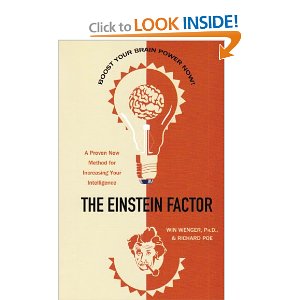

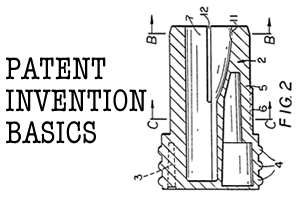
 In this article we are going to talk about the patent invention basics to get you started in the invention patenting process.
In this article we are going to talk about the patent invention basics to get you started in the invention patenting process.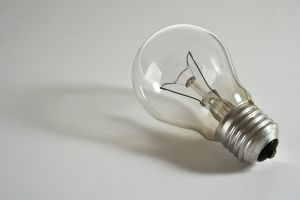
 Patenting an idea is not necessary as straightforward as it seems, but it is also not overly complex. Inventors often talk about their great idea and how they have to get patent protection for it.
Patenting an idea is not necessary as straightforward as it seems, but it is also not overly complex. Inventors often talk about their great idea and how they have to get patent protection for it.
 In this article we will explore the often asked question of how to register an invention.
In this article we will explore the often asked question of how to register an invention.
 Many inventors have a great idea that they then go on to make into a machine, object , process or method. Once they create the physical object, though, many do not know what their next steps can be. Some decide to manufacture their invention themselves.
Many inventors have a great idea that they then go on to make into a machine, object , process or method. Once they create the physical object, though, many do not know what their next steps can be. Some decide to manufacture their invention themselves.
 There are a lot of websites out there offering basic inventor assistance regarding patenting and other types of advice regarding your inventions. Some are certainly helpful at getting started and perhaps providing some introductory information as to patentability and other alternatives an inventor might pursue to protect an invention.
There are a lot of websites out there offering basic inventor assistance regarding patenting and other types of advice regarding your inventions. Some are certainly helpful at getting started and perhaps providing some introductory information as to patentability and other alternatives an inventor might pursue to protect an invention.
 A provisional patent may be a better route for an inventor that does not want to make the full commitment of funds to an actual patent. It costs a few hundred dollars and gets the patent process started, and allows for a year of not filing very much paperwork. It can allow initial protection of the inventive idea without making the huge investment while an inventor looks for an investor or buyer for the invention.
A provisional patent may be a better route for an inventor that does not want to make the full commitment of funds to an actual patent. It costs a few hundred dollars and gets the patent process started, and allows for a year of not filing very much paperwork. It can allow initial protection of the inventive idea without making the huge investment while an inventor looks for an investor or buyer for the invention.

 Ideas, while they abound and spring forth from our imagination, are not legally regarded as physical ‘things’. As a result, there are only really two ways to go abou it if you are wanting to find out how to protect an idea: You can keep them a secret, or you can develop a product that results from the idea in secret.
Ideas, while they abound and spring forth from our imagination, are not legally regarded as physical ‘things’. As a result, there are only really two ways to go abou it if you are wanting to find out how to protect an idea: You can keep them a secret, or you can develop a product that results from the idea in secret.